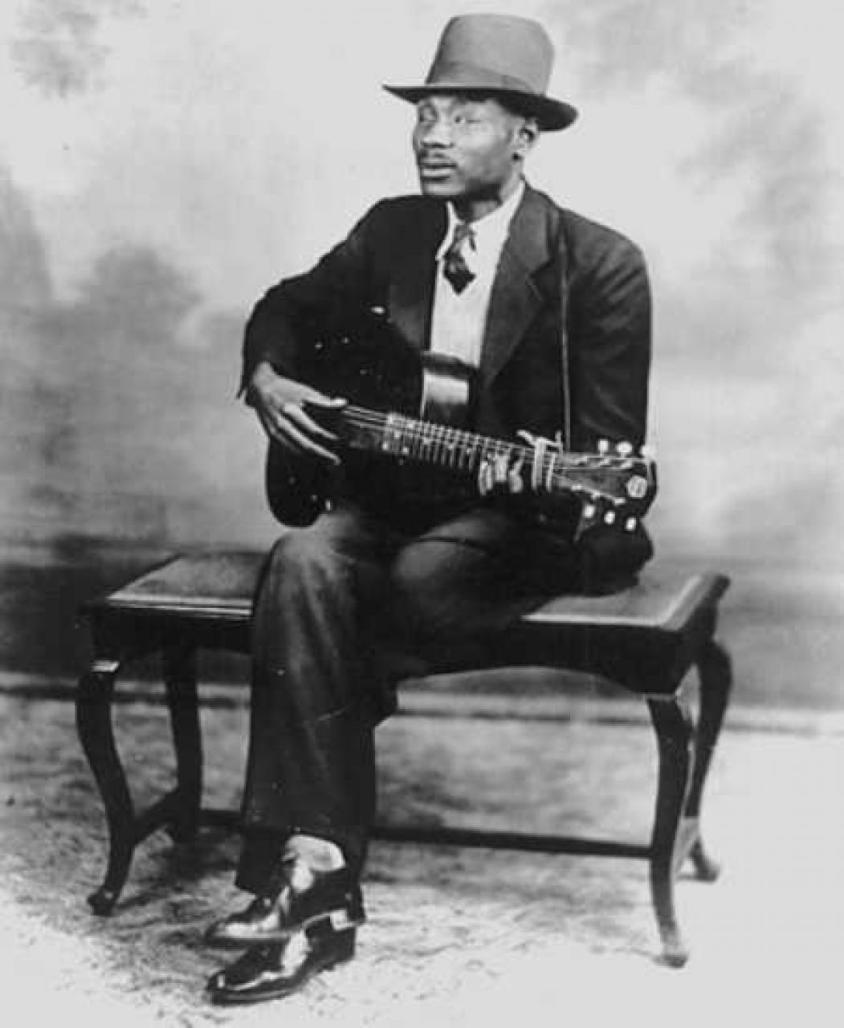By Jordan Meadows
Staff Writer
During the 1920s through the 1940s, Durham, North Carolina—known proudly as the Bull City—was one of the most vibrant centers of African American blues music in the South.
 In the tobacco town, African American musicians crafted a distinctive regional sound that would come to be known as the Piedmont blues, a syncopated, ragtime-inflected style that reflected both the struggles and the spirit of Black life in the Carolinas.
In the tobacco town, African American musicians crafted a distinctive regional sound that would come to be known as the Piedmont blues, a syncopated, ragtime-inflected style that reflected both the struggles and the spirit of Black life in the Carolinas.
At the heart of Durham’s blues scene stood the city’s Hayti community, a thriving Black business and cultural district located just south of downtown. Nearby tobacco warehouses provided steady work for many African Americans, even through the Great Depression. These factories also brought together a large, stable working-class audience.
Steady jobs, spare change, and a lively community created fertile ground for a music scene. From barbershops to street corners, from back-room cafes to tobacco warehouses, Durham’s Black neighborhoods pulsed with music. Fall tobacco harvests and auctions were especially vibrant times, drawing musicians from across the region.
The Piedmont blues style was lighter and more melodic than its Mississippi Delta counterpart—more intricate in guitar picking and closer in feel to ragtime or early bluegrass. It was also deeply communal, reflecting the social worlds of Durham’s African American neighborhoods.
Among the movement’s towering figures was Fulton Allen, better known as Blind Boy Fuller (1907–1941). Born in Wadesboro, North Carolina, Fuller lost his sight as a young man and turned fully to music for his livelihood. After moving to Durham’s Hayti district in 1929, he became the central figure in the Bull City’s blues scene.
Fuller’s mastery of the steel-bodied National guitar, his sharp lyrics, and his sheer output—over 135 recordings between 1935 and 1940 for labels like Vocalion, Melotone, and Decca—made him the best-selling East Coast bluesman of his time. His 1940 hit “Step It Up and Go” remains the quintessential Piedmont blues anthem, the “Johnny B. Goode” of its genre.
Fuller’s frequent collaborator was Blind Gary Davis (1896–1972), a South Carolina-born virtuoso guitarist later known as Reverend Gary Davis. His intricate fingerpicking and gospel-infused style would profoundly influence later generations of folk and rock musicians, including Bob Dylan, Taj Mahal, and the Grateful Dead’s Jerry Garcia.
Rounding out Durham’s “Big Four” were Sonny Terry (Saunders Terrell), a Georgia-born harmonica master, and Brownie McGhee, a guitarist and singer who overcame childhood polio. Terry and McGhee’s enduring partnership would carry the Bull City blues tradition onto the national and international folk circuit for decades.
For many in the segregated South, music provided one of the few viable paths to both income and respect. In Durham, these artists transformed adversity into art, building a musical legacy that captured the rhythms, humor, and hardships of Black life in early 20th-century North Carolina.
Fuller’s untimely death in 1941 marked the close of Durham’s golden age of blues. Within a few years, Davis, Terry, and McGhee had moved north, following new opportunities in the postwar urban music scenes. Back home, much of Durham’s Black cultural geography was literally erased. The urban renewal projects of the 1960s demolished much of the Hayti district, displacing thousands of families and erasing venues where the blues once thrived.
Though the city once forgot its own blues history, the Bull City Blues spirit endures. Local radio continues to celebrate it—most notably through “Bull City Blues,” a show on 90.7 FM WNCU, originating from North Carolina Central University and hosted by Dave Tripp.
Today, Durham’s blues legacy stands alongside those of Memphis and Chicago as one of the great American stories of resilience and creativity.
